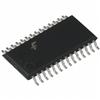FAN5250: Features: • High efficiency over wide load range• Non dissipative current-sense; uses MOSFET RDS(ON) or can use optional Current-Sense resistor for greater precision• Overcurrent p...
floor Price/Ceiling Price
- Part Number:
- FAN5250
- Supply Ability:
- 5000
Price Break
- Qty
- 1~5000
- Unit Price
- Negotiable
- Processing time
- 15 Days
SeekIC Buyer Protection PLUS - newly updated for 2013!
- Escrow Protection.
- Guaranteed refunds.
- Secure payments.
- Learn more >>
Month Sales
268 Transactions
Payment Methods
All payment methods are secure and covered by SeekIC Buyer Protection PLUS.

 FAN5250 Data Sheet
FAN5250 Data Sheet








